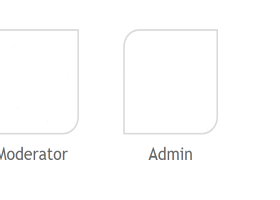Margin is the amount of equity that must be maintained in a trading account to keep a position open. It acts as a good faith deposit by the trader to ensure against trading losses. A margin account allows customers to open positions with higher value than the amount of funds they have deposited in their account.
The equity in excess of the margin requirement in a trading account acts as a cushion for the trader. If the trader loses on a position to the point that equity is below the minimum margin requirement, meaning the cushion has completely worn out, then a margin call will result. Generally, in online forex trading, the trader must deposit more funds before the margin call or the position will be closed. Since no calls are issued before the liquidation, the margin call is better known as ‘margin out' in this case. The account will be margined out, meaning all the positions will be closed, once the equity falls below the margin requirement.
Example:
| Account | A |
| Account Equity | 500USD |
| Contract Size | 10,000 |
| Currency | EUR/USD |
| Spread | 3 pips |
| Margin Requirement | 50USD |
| Leverage | 1,000:50 = 200:1 |
| Pips to margin out (1 lot) | 447 |
Consider Account A, the margin requirement for 1 lot of position is 50USD. The free usable margin is Account Equity - (Margin Requirement + Spread) = 500 - (50 + 3) = 447. The account will be margined out if EUR/USD moves 447 pips against the position.
Why Margin Requirement Matters?
Leverage is a double-edged sword. With proper usage, it can enhance customers' funds to generate quick returns and increase the potential return of an investment. However, without proper risk management, it can lead to quick and large losses. Consider the following example:
| Account | A | B |
| Account Equity | 500USD | 500USD |
| Contract Size | 10,000 | 10,000 |
| Currency | EUR/USD | EUR/USD |
| Spread | 3 pips | 3 pips |
| Margin Requirement | 50USD | 200USD |
| Leverage | 1,000:50 = 200:1 | 1,000:200 = 50:1 |
| Pips to margin out (1 lot) | 447 | 297 |
| Max no. of lots at one time | 9 | 2 |
| Pips to margin out (max lots) | 3 | 47 |
The initial conditions of the accounts are the same, except for account A, the margin requirement per lot is 50USD and account B is 200USD.
Free usable margin = Account Equity - (Margin Requirement + Spread)*no. of lots
Maximum number of lots open at one time = Account Equity / (margin requirement + spread)
In account A, for 1 lot of position, the free usable margin is 500 - (50+3) = 447, which means the account will be margined out if EUR/USD moves 447 pips against the position. The max number of lots open at one time = (500/(50+3)) = 9 lots, with 500 - (50+3)*9 = 23USD free usable margin left for 9 lots. Once EUR/USD moves 23/9 = 3 pips against the positions, there would be not enough usable margin and account A will be margined out.
In account B, the free usable margin for 1 lot is 500 - (200+3) = 297, which means the account will be margined out if EUR/USD moves 297 pips against the position. The max number of lots open at one time = (500/(200+3)) =2 lots, with 500 - (200+3)*2 = 94USD free usable margin for 2 lots. If EUR/USD moves 94/2 = 47 pips against the positions, account B would be margined out.
With 1 lot of open position, account A has 447USD usable margin as cushion before being margined out, while account B only as 297USD. However, with more usable margin, account A has higher probability of being over traded. As shown in the above example, the more open positions, the easier is the account to get margin out.



